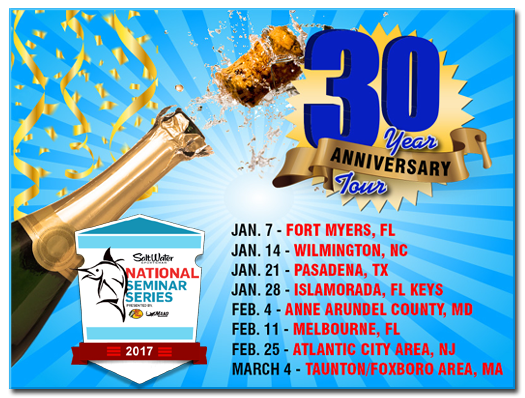[responsive]
 [/responsive]
[/responsive]
There will be an educational seminar for you and other interested anglers who are interested in gaining a better understanding of the effects that the ocean environment have on the catchability tuna, dolphin, wahoo, billfish, sharks and kingfish. The goal is to provide information that will help increase your time catching rather than searching for concentrations of quality fish. The talk will not be a ROFFS™ infomercial, but free gift certificates to use ROFFS™ will be provided at the end of the seminar.
There will be a brief review of ROFFS™ philosophy along with some of the satellite fisheries oceanographic research and operational work that Dr. Roffer have been involved with at ROFFS™, NASA, and NOAA (NMFS, SECOORA and IOOS), Office of Homeland Security (including search and rescue), and various state and federal environmental protection agencies (hazardous materials monitoring). Mention will be given why NASA is interested in fish migrations and fisheries management.
The seminar will focus on the concept of a fish’s preferred habitat and catchability, in terms of water temperature, salinity, dissolved oxygen, clarity/turbidity, and water color. Fish catchability in terms of fish being available (geographically) and vulnerable to surface fishing gear will be stressed. Climate variability including El Niño will be discussed in relation to catchability. Part of this talk will focus on the variability of tuna in the local waters.
Preferred habitat and catchability will be linked to different strategies and tactics that anglers should use to increase their catch rates in relation to the main factors affecting fish (e.g. temperature, water color, turbidity, water density, and bottom structure. A critical review of some of the more common techniques that are presently being used to search for productive fishing grounds by local area fishermen, as well as, by others using satellite imagery and other oceanographic data and models will be presented.
The dynamics of ocean circulation and water mass boundaries, in terms of their water density differences in relation to forming fish concentrations will be shown. Differences in the direction of eddy rotation (clockwise and counter-clockwise) for forming concentrations of baitfish and finding concentrations of feeding fish will be explained.
The audience will be instructed on how they can find and use satellite data on the internet to understand regional and local area circulation to improve their catch rates. A tutorial will be presented on the techniques needed to accomplish this, as well as, the challenges and limitations when using satellite data and common errors when trying to interpret the imagery. Many different examples of what can be gained from individual static satellite images and movie loops of the data will be provide.
There will be a question and answer period at the end of the seminar. There is no cost to attend this seminar. Some of us will move to a local bar-restaurant to continue the conversation after as well.
If there is any more that we can assist you with, please let us know at ROFFS™ (321-723-5759).
Seminar Schedule:
Thursday January 12 , 2017
Social hour meet and greet: 6:00 PM to 7:00 PM
Seminar & questions: 7:00 PM – 8:30 PM (or so).
*Location: Radio Island Marina, 156 Radio Island Road, Beaufort, NC 28516 Phone: 252-726-3773
This week Dr. Roffer (National Instructor) will be traveling to Wilmington, NC as part of the 30th year anniversary tour for the George Poveromo Saltwater Sportsman National Seminar Series. He and several other experts will be there providing knowledge, fishing tips and tactical advice. Come Saturday Jan. 14 to the Hilton Wilmington Riverside, Grand Ballroom, 301 North Water Street, Wilmington, NC 28401 Doors open at 8am!







